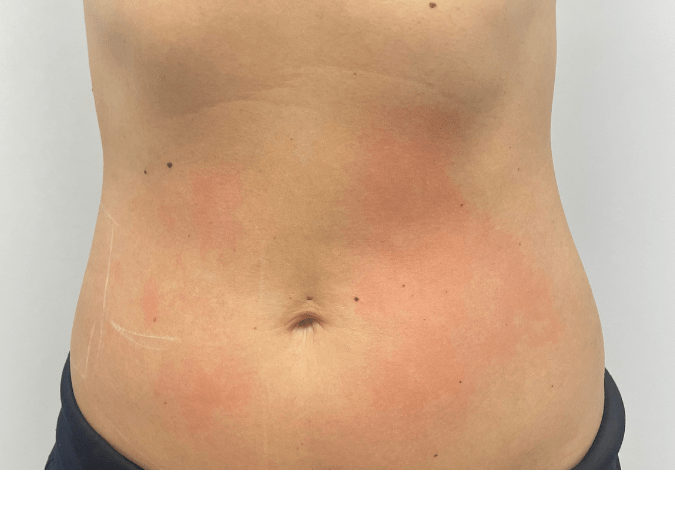Laser Lipo
Laser Lipo
What is Laser Lipo?
Laser lipolysis, also known as laser liposuction or laser-assisted liposuction, is a minimally invasive cosmetic procedure that uses laser energy to liquefy and remove excess fat deposits from specific areas of the body. It is an alternative to traditional liposuction surgery and is designed to contour and reshape targeted areas.
How is laser Lipo performed
During the procedure, laser energy is used to disrupt the fat cell membranes, causing them to rupture and release their contents. The liquefied fat is then suctioned out through the cannula or naturally eliminated by the body’s lymphatic system.
The laser used in laser lipolysis can have different wavelengths and settings depending on the specific device and technique employed. The laser energy not only melts the fat cells but also stimulates collagen production in the skin, leading to some skin tightening effects.
How much fat reduction can be achieved with laser lipolysis?
The average fat reduction achieved can vary depending on various factors, including the individual’s body composition, the specific areas treated, the extent of fat deposits, and the technique used. It is important to note that laser lipolysis is not primarily intended for significant weight loss but rather for targeted contouring and body sculpting.
In general, laser lipolysis can result in a noticeable reduction in fat volume in the treated areas. However, the amount of fat reduction can vary from person to person. On average, patients may expect a reduction of approximately 25-50% of the fat in the treated area. Most people notice 1-2 inches drop in measurements.
To determine the expected fat reduction and achieve optimal results, it is crucial to consult with a qualified healthcare professional or plastic surgeon. They can assess your individual case, discuss your goals and expectations, and provide personalized recommendations based on your unique body characteristics.
It’s important to remember that the success of laser lipolysis also depends on factors beyond fat reduction, such as overall body contouring, skin tightening effects, and the overall satisfaction with the aesthetic outcome
How many sessions of laser lipolysis are needed?
The number of sessions needed depends on the area treated, amount of fat and the desired outcome. Typically 1-4 sessions may be recommended depending on the specific laser, settings and protocol used.
It is important to have realistic expectations when considering laser lipolysis. The procedure is not a substitute for a healthy lifestyle, including proper diet and exercise. While the fat cells removed during laser lipolysis are permanently eliminated, it is still possible for remaining fat cells to enlarge in the future if a person gains weight. Maintaining a stable weight through a balanced lifestyle can help optimize the long-term results of the procedure.
laser liposuction before and after pictures


ready to remove fat in targeted areas?
Schedule a consultation to discuss the best treatment options for your needs.
what are the advantages of laser lipolysis over traditional liposuction?
While laser lipolysis offers permanent fat cell removal, maintaining the results requires a commitment to a healthy lifestyle. Here are some key points to consider for post-procedure care and long-term maintenance:
- Follow Post-Treatment Instructions: Adhering to the aftercare guidelines provided by your healthcare professional is crucial for optimal healing and results. This may include wearing compression garments, avoiding strenuous activities, and following a specific skincare regimen.
- Maintain a Healthy Diet and Exercise Routine: Although the fat cells removed during laser lipolysis are permanently eliminated, remaining fat cells can still enlarge if a person gains weight. Maintaining a stable weight through a balanced diet and regular exercise can help optimize and prolong the results of the procedure.
- Regular Follow-Ups: Schedule follow-up appointments with your healthcare professional to monitor your progress and address any concerns. These check-ins can help ensure that you are maintaining your results and staying on track with your goals.
what are the advantages of laser lipolysis over traditional liposuction?
Compared to traditional liposuction, laser lipolysis offers several potential advantages. These may include:
Minimally invasive: Laser lipolysis is performed through small incisions, resulting in minimal scarring and less trauma to the surrounding tissues.
Improved precision: The laser energy can selectively target and break down fat cells while minimizing damage to other structures such as blood vessels and nerves.
Reduced downtime: The recovery period after laser lipolysis is often shorter compared to traditional liposuction, with less bruising, swelling, and discomfort.
Potential skin tightening: The laser energy stimulates collagen production, which can result in some degree of skin tightening in the treated areas.
Laser lipolysis is typically performed on localized areas of the body where stubborn fat deposits are present, such as the abdomen, thighs, hips, arms, and chin. However, it is important to note that laser lipolysis is not a weight loss solution or a substitute for a healthy lifestyle. It is best suited for individuals who are already close to their ideal body weight but have specific areas of excess fat that are resistant to diet and exercise.
As with any medical procedure, there are potential risks and complications associated with laser lipolysis, including infection, bleeding, scarring, and uneven contouring. It is important to consult with a qualified healthcare professional such as a plastic or cosmetic surgeon to determine if laser lipolysis is suitable for your specific goals and concerns.
